© 2025 MJH Life Sciences™ , Patient Care Online – Primary Care News and Clinical Resources. All rights reserved.
Phantom Limb Pain
Few common pain conditions have been as vexing to both patients and physicians as phantom limb pain. In our new slideshow, get a primer on prevention, treatment, pharmacotherapy, and more.
Few common pain conditions have been as vexing to both patients and physicians as phantom limb pain (PLP), which is defined as a painful sensation in the missing limb. Although physicians have been aware of PLP since at least the 16th century, its etiology and treatment continue to be the subject of uncertainty and debate. In the slides below, find an overview on etiology, prevention, treatment, and more.
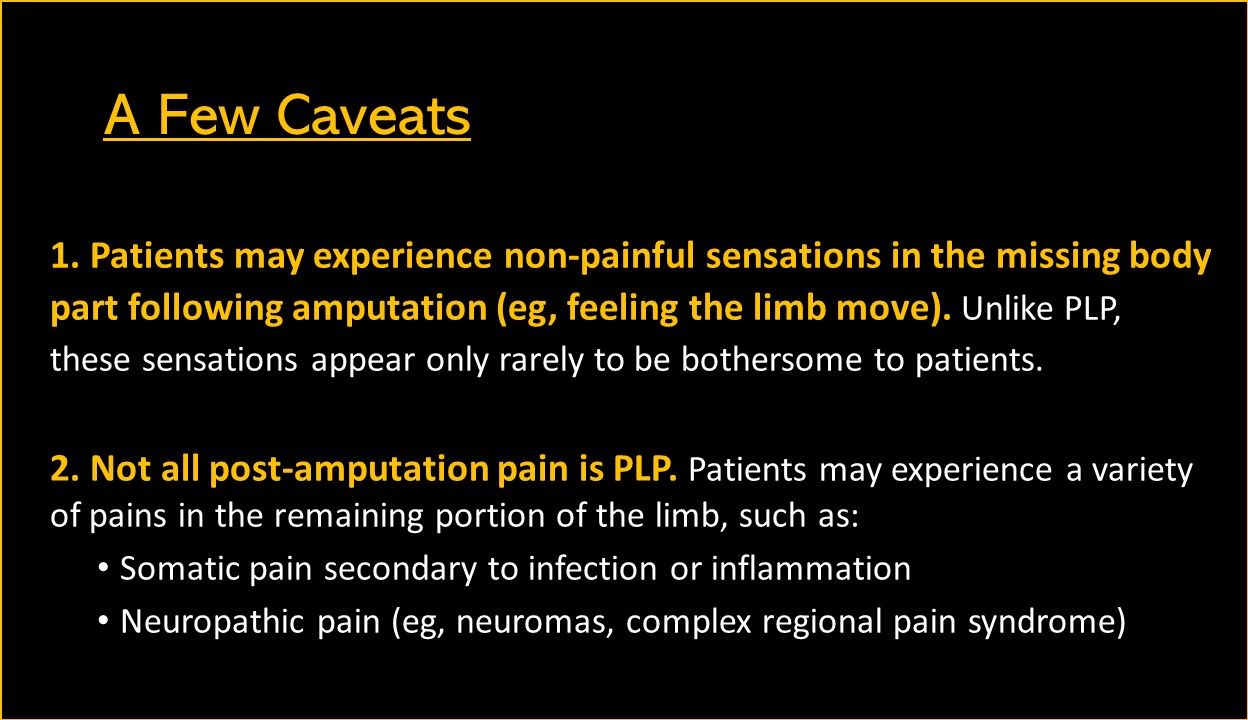
A few caveats:
1. Patients may experience non-painful sensations in the missing body part following amputation (eg, feeling the limb move).
2. Not all post-amputation pain is PLP.
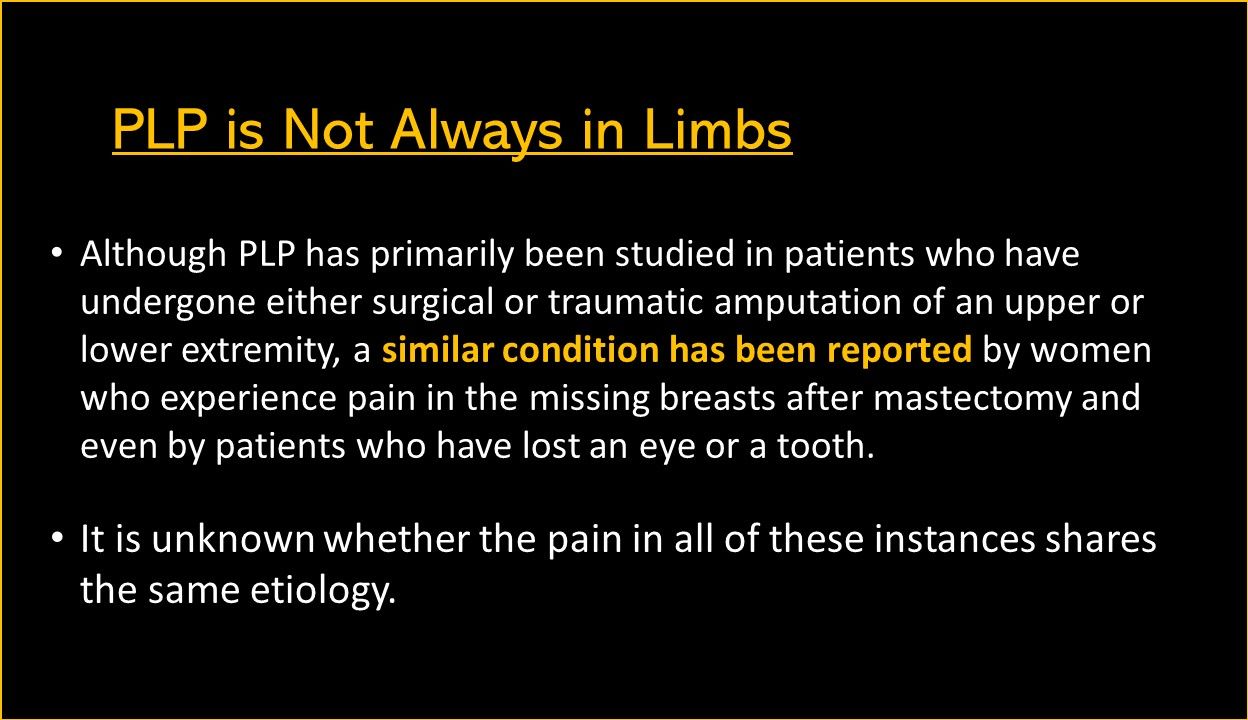
Although PLP has primarily been studied in patients who have undergone either surgical or traumatic amputation of an upper or lower extremity, a similar condition has been reported by women who experience pain in the missing breasts after mastectomy and even by patients who have lost an eye or a tooth. However, it is unknown whether the pain in all of these instances shares the same etiology.
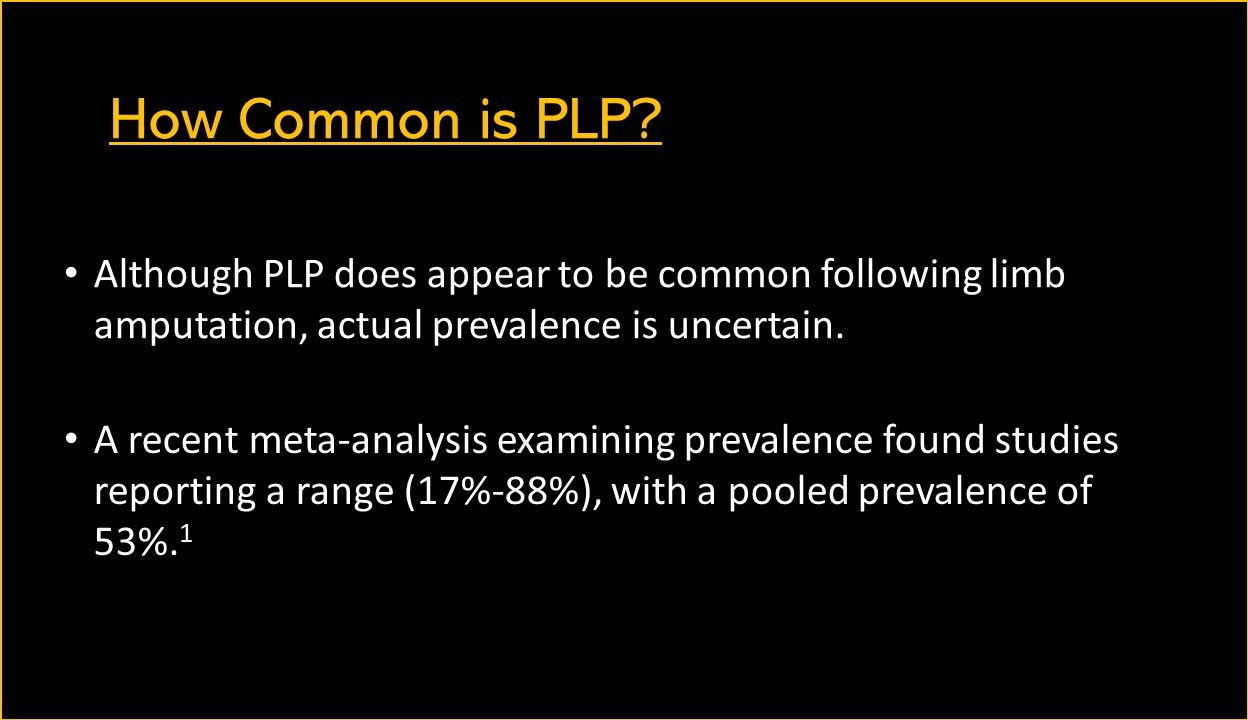
Although PLP does appear to be common following limb amputation, actual prevalence is uncertain. A recent meta-analysis examining prevalence found studies reporting a range (17%-88%), with a pooled prevalence of 53%.1
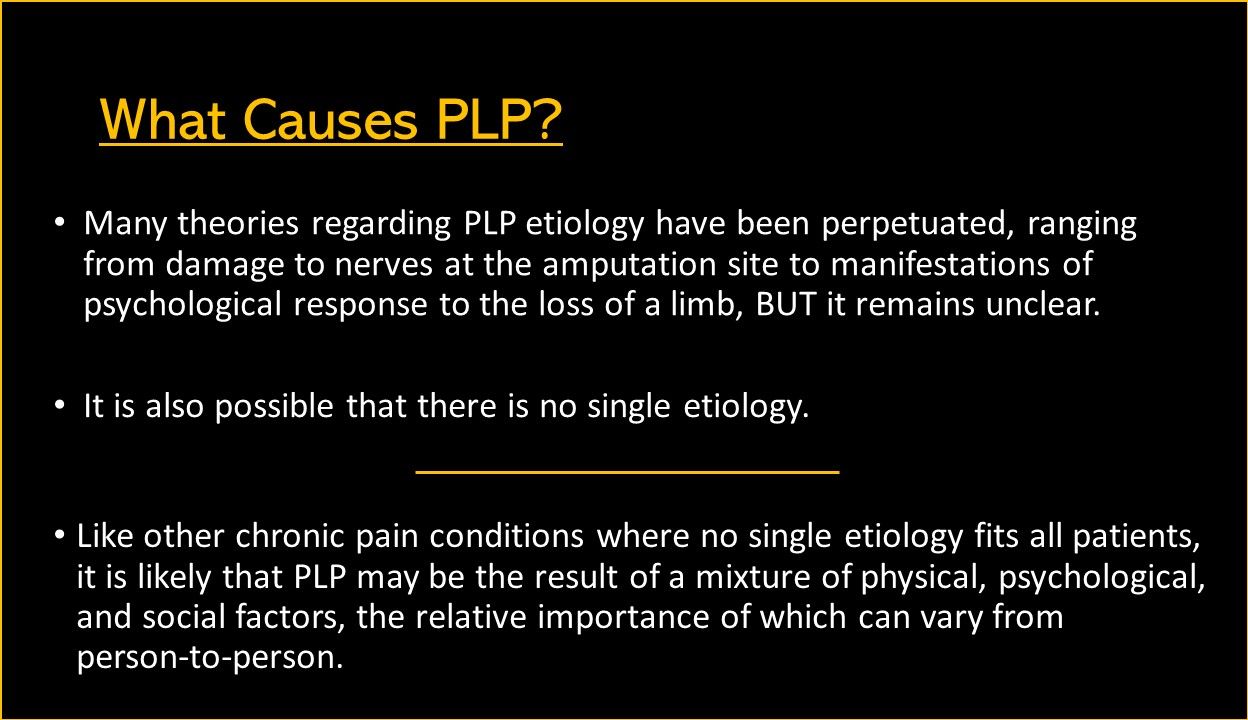
Many theories regarding PLP etiology have been perpetuated, ranging from damage to nerves at the amputation site to manifestations of psychological response to the loss of a limb, but it remains unclear. It is also possible that there is no single etiology.
Like other chronic pain conditions where no single etiology fits all patients, it is likely that PLP may be the result of a mixture of physical, psychological, and social factors, the relative importance of which can vary from person-to-person.

Current theories regarding PLP2 include:
• Peripheral and central nervous system responses to damage done to nerves and other tissues by the amputation.
• Spinal cord sensitization.
• Reorganization of the somatosensory cortex in response to the amputation.
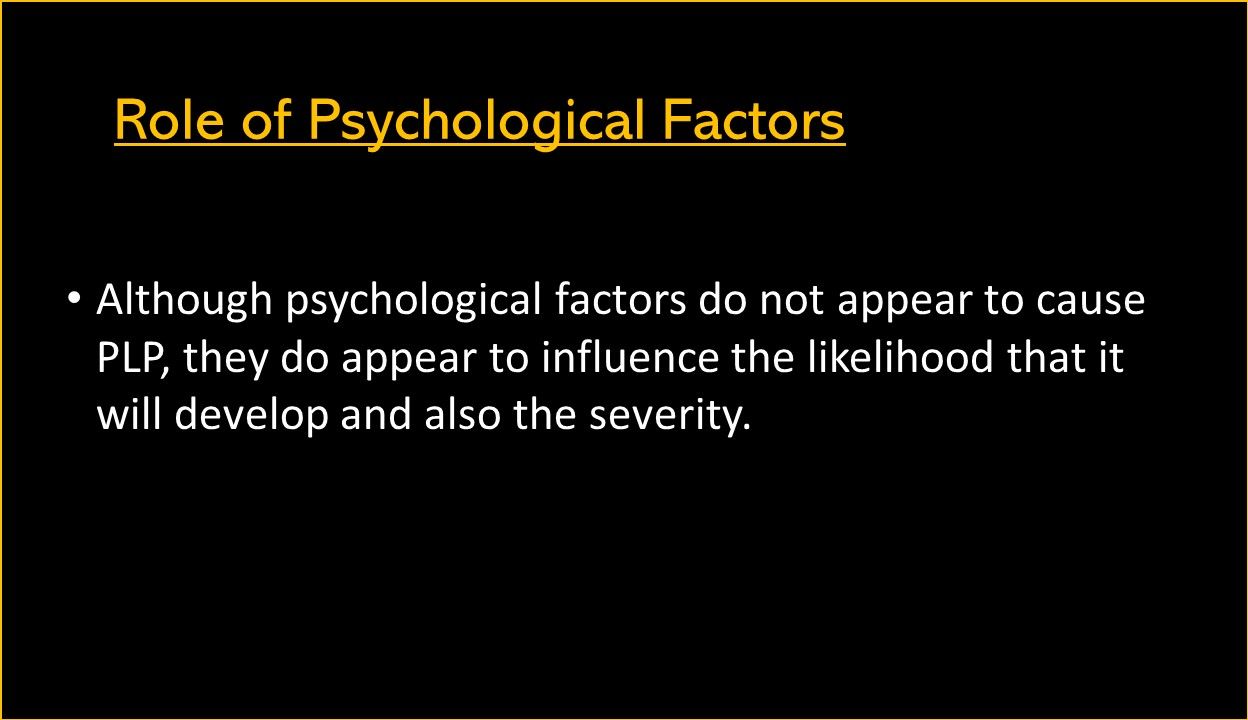
Although psychological factors do not appear to cause PLP, they do appear to influence the likelihood that it will develop and also the severity.
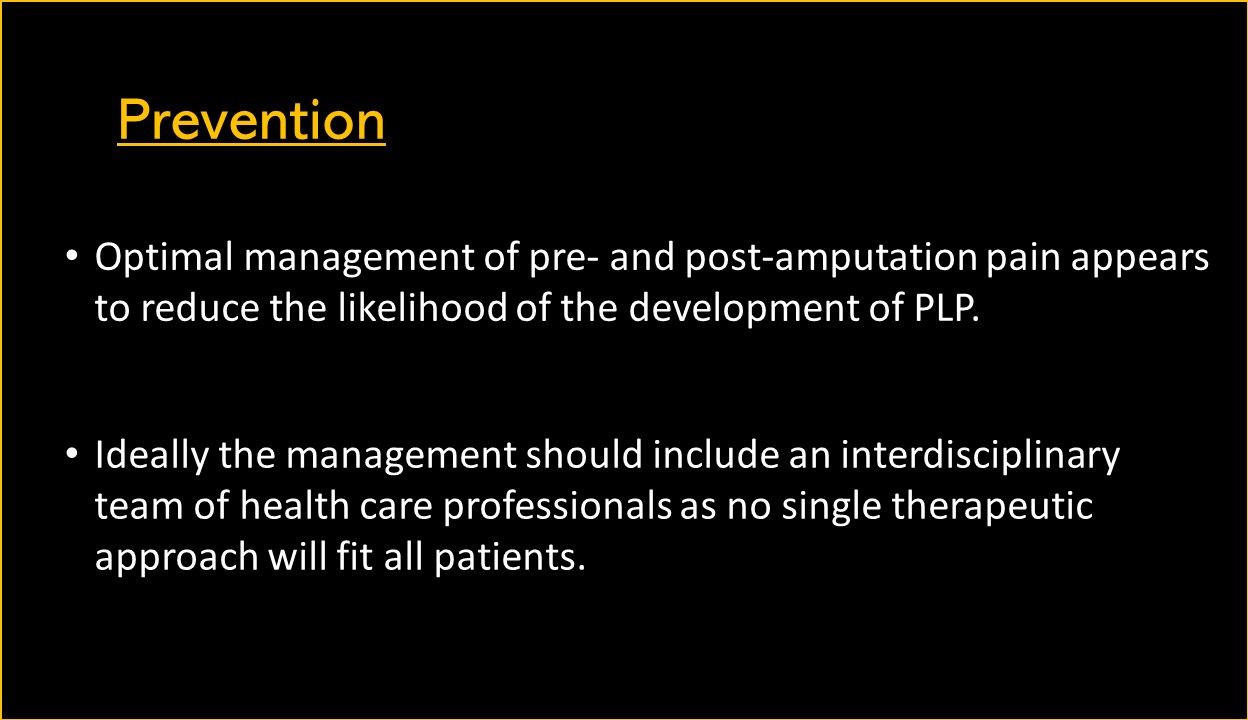
Optimal management of pre- and post-amputation pain appears to reduce the likelihood of the development of PLP. Ideally the management should include an interdisciplinary team of health care professionals as no single therapeutic approach will fit all patients.
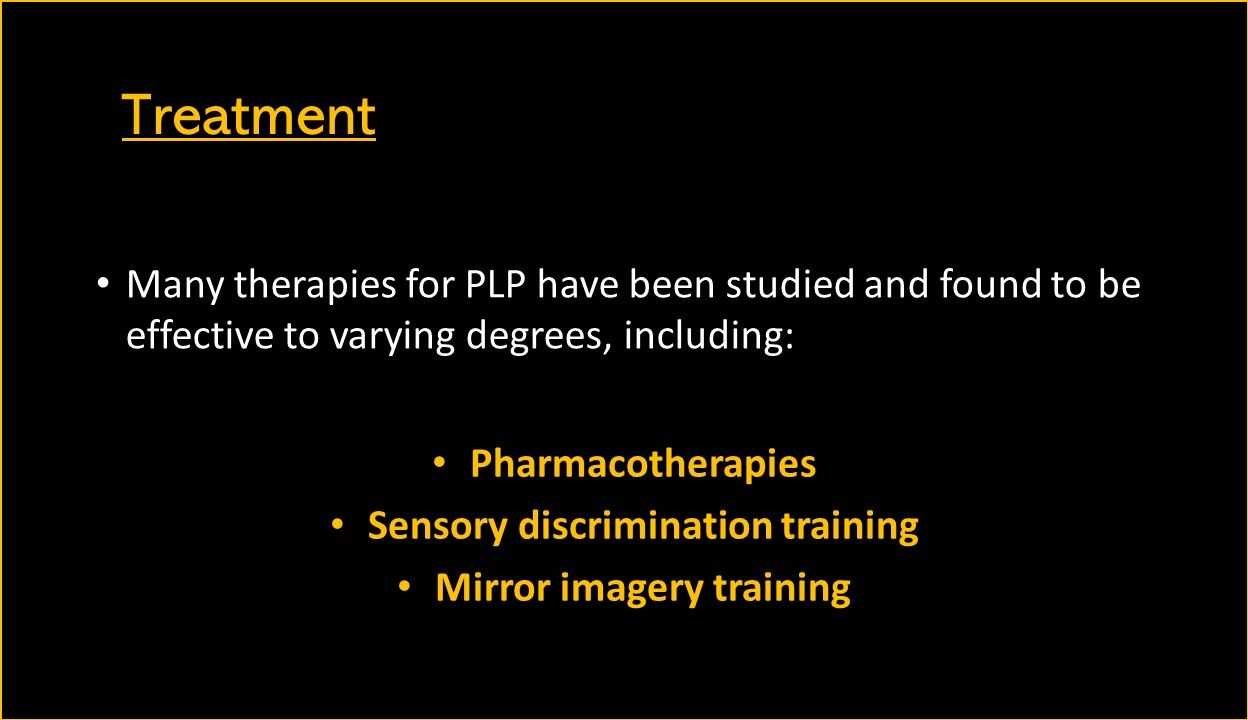
Many treatments for PLP have been studied and found to be effective to varying degrees, including pharmacotherapies, sensory discrimination training, and mirror imagery training.
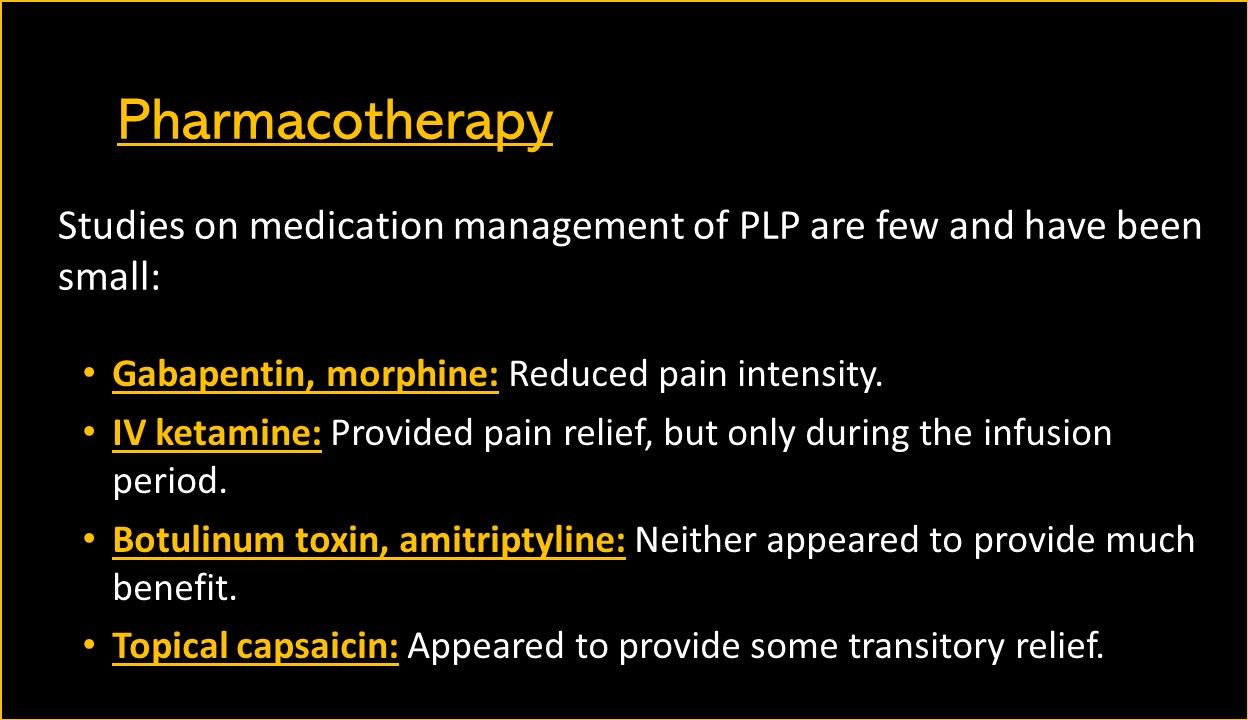
Studies on medication management of PLP are few and have been small:
• Gabapentin, morphine: Reduced pain intensity.
• IV ketamine: Provided pain relief, but only during the infusion period.
• Botulinum toxin, amitriptyline: Neither appeared to provide much benefit.
• Topical capsaicin: Appeared to provide some transitory relief.

Other medications commonly used to treat chronic neuropathic pain may offer potential benefits for PLP and should not be ruled out:
• Serotonin norepinephrine reuptake inhibitors (eg, duloxetine, venlafaxine)
• Other anticonvulsants (eg, pregabalin)
• Opioids other than morphine
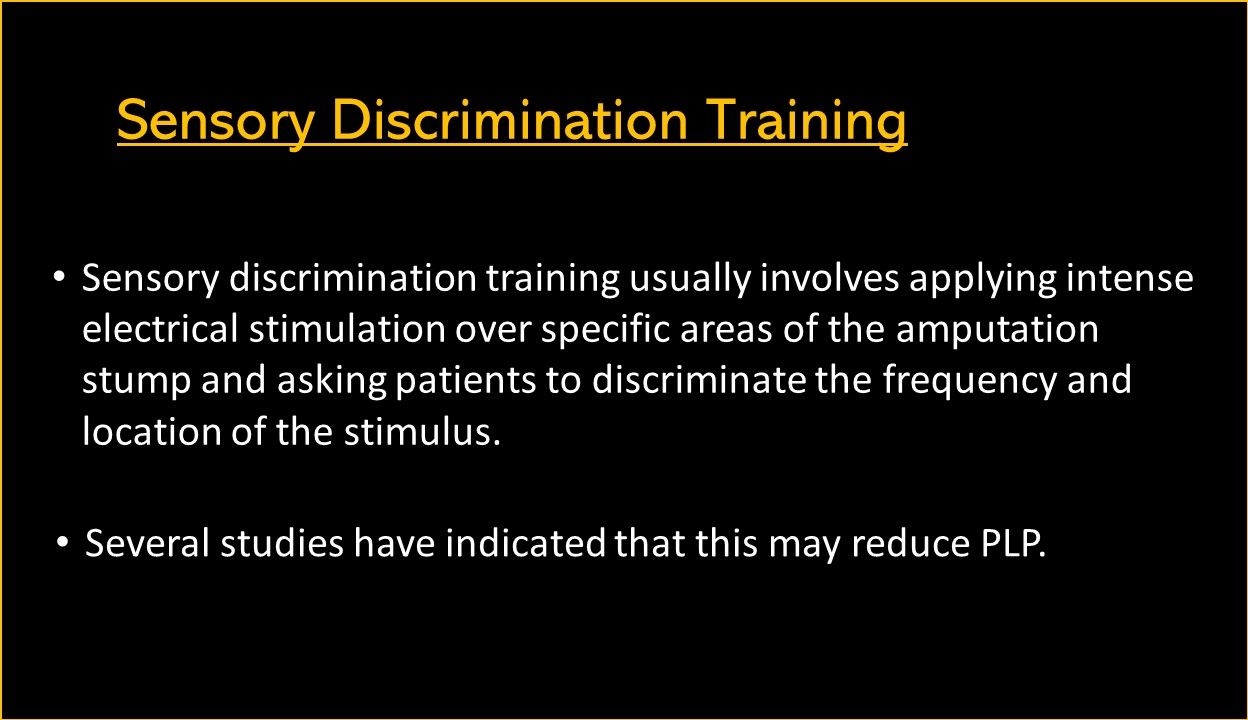
Sensory discrimination training usually involves applying intense electrical stimulation over specific areas of the amputation stump and asking patients to discriminate the frequency and location of the stimulus. Several studies have indicated that this may reduce PLP.
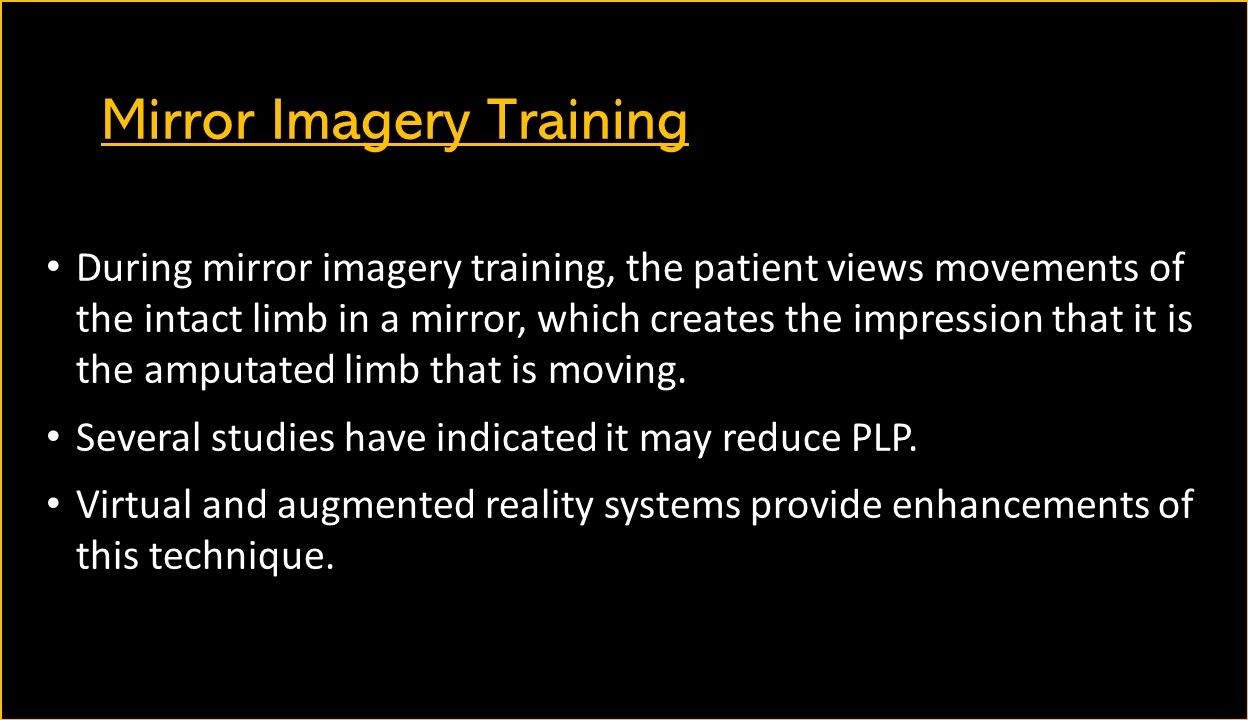
During mirror imagery training, the patient views movements of the intact limb in a mirror, which creates the impression that it is the amputated limb that is moving. Several studies have indicated it may reduce PLP. Virtual and augmented reality systems provide enhancements of this technique.
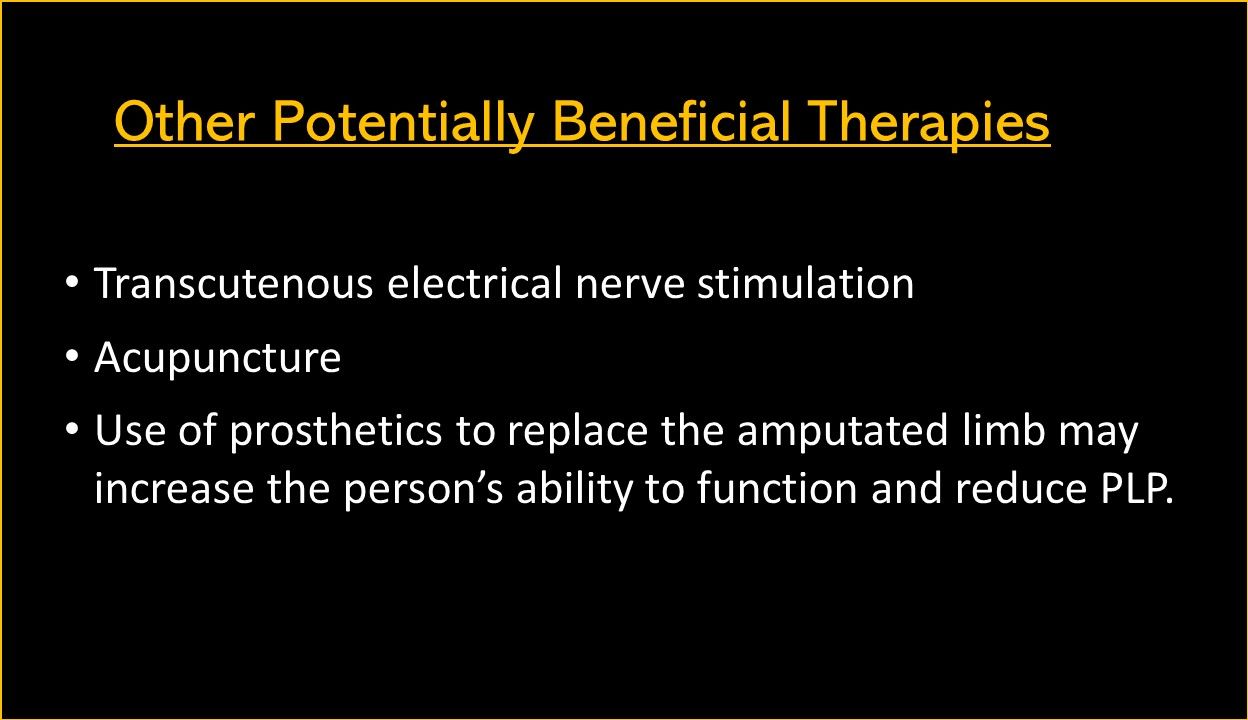
Other potentially beneficial therapies include: Transcutenous electrical nerve stimulation, acupuncture, and the use of prosthetics to replace the amputated limb may increase the person’s ability to function and reduce PLP.
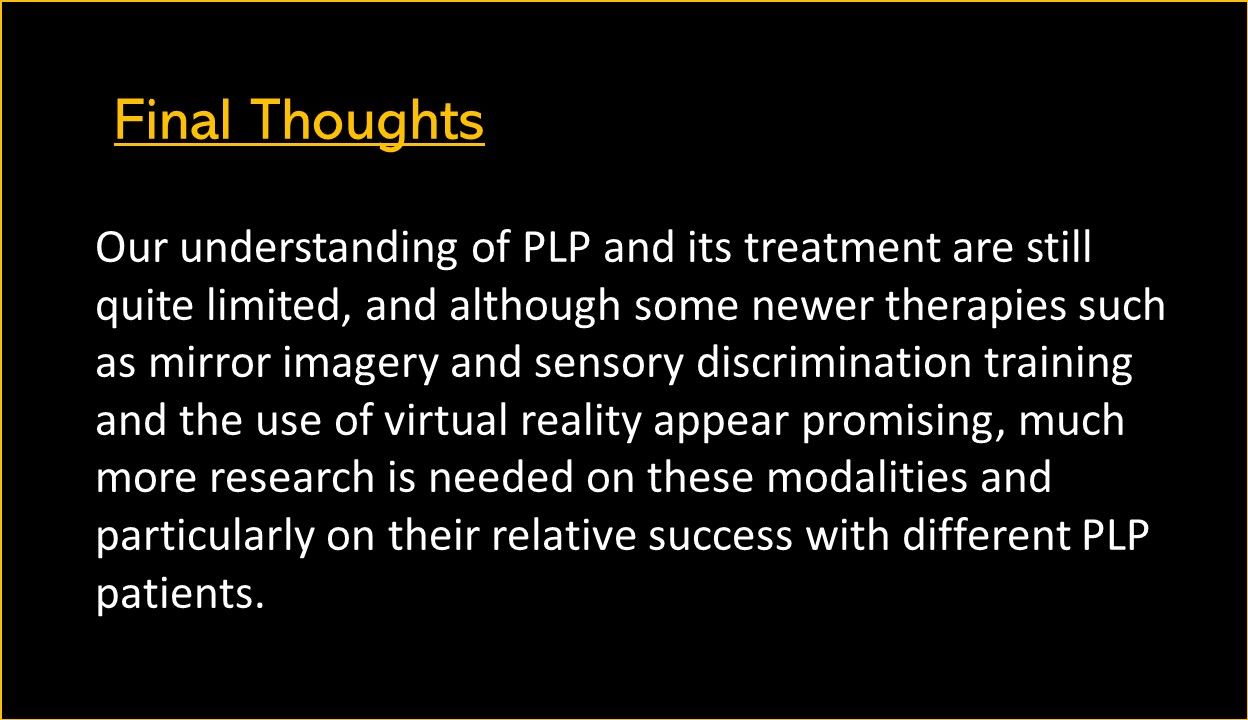
Final thoughts. Our understanding of PLP and its treatment are still quite limited, and although some newer therapies such as mirror imagery and sensory discrimination training and the use of virtual reality appear promising, much more research is needed on these modalities and particularly on their relative success with different PLP patients.
References: 1. Schwingler PM, Moman RN, Hunt C, et al. Prevalence of postamputation pain and its subtypes: a meta-analysis with meta-regression. Pain Rep. 2021;6:e918.
2. Erlenwein J, Diers M, Ernst J, Schulz F, Petzke F. Clinical updates on phantom limb pain. Pain Rep. 2021;6:e888.
Related Content:




